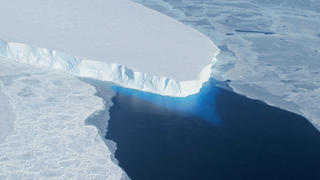West Antarctic Collapse
Three major lines of evidence point to the glaciers' eventual demise: the changes in their flow speeds, how much of each glacier floats on seawater, and the slope and depth of the terrain they are flowing over. In a paper in April, Rignot's research group discussed the steadily increasing flow speeds of these glaciers over the past 40 years. This new study examines the other two lines of evidence.
As glaciers flow out from land to the ocean, large expanses of ice behind their leading edges float on the seawater. The point on a glacier where it first loses contact with land is called the grounding line. Nearly all glacier melt occurs on the underside of the glacier beyond the grounding line, on the section floating on seawater. The Antarctic glaciers studied have thinned so much they are now floating above places where they used to sit solidly on land, which means their grounding lines are retreating inland.Above: Move bar to compare the grounding line of the Smith Glacier from 1996 (left) to the location in 2011 (right) which has retreated inland 35 km during this time. The green line indicates the location of the 1996 grounding line. Download HTML to embed this in your web page.
The bedrock topography is another key to the fate of the ice in this basin. All the glacier beds slope deeper below sea level as they extend farther inland. As the glaciers retreat, they cannot escape the reach of the ocean, and the warm water will keep melting them even more rapidly.
Below are two edited versions of narrated stories released by JPL to explain this research. In addition are the two versions of the unedited animations provided to JPL to support the release. The unedited animations show the region of study by the JPL researchers, identifying by name the glaciers that terminate in the Amundsen Sea. One of the animations includes data showing the velocity of the glaciers in the region, flow vectors showing the movement of the glaciers colored by their velocity and a difference image showing the change in velocity between 1996 and 2008. The second animation does not include these datasets.
Both versions of the animation draw close to the Smith Glacier and show how the grounding line of this glacier has moved inland 35 kilometers between 1996 and 2011. As the surface of the ice sheet is peeled away, showing the height and depth of the bedrock topography. Regions below sea level are shown in shades of brown while areas above sea level are shown in green. Sea level is shown in yellow.


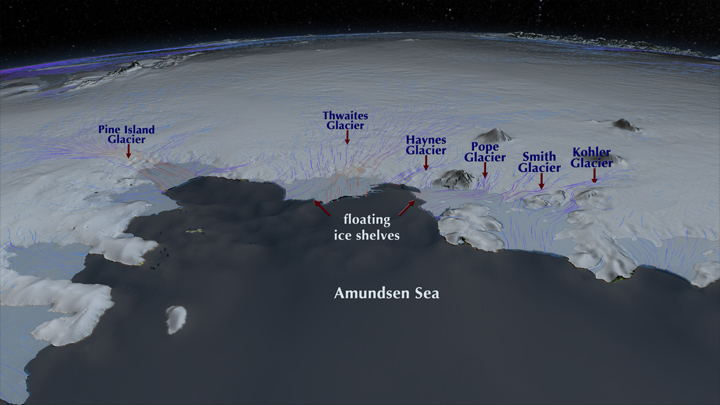

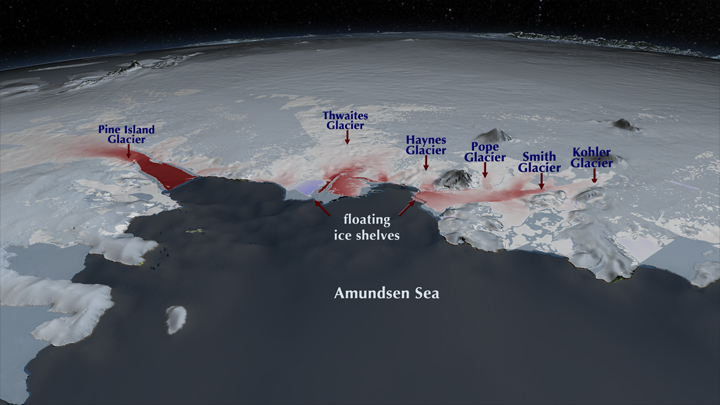


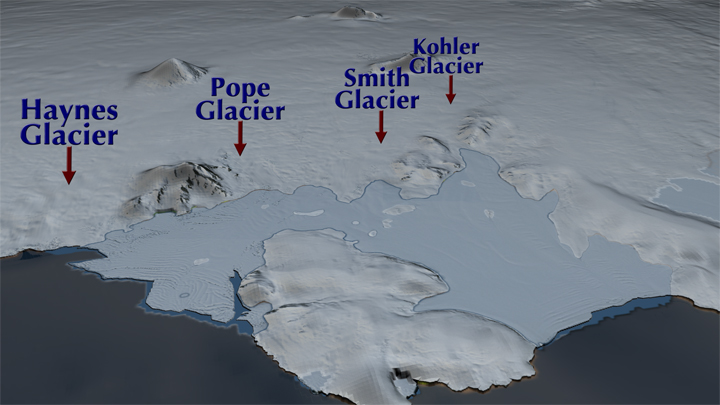
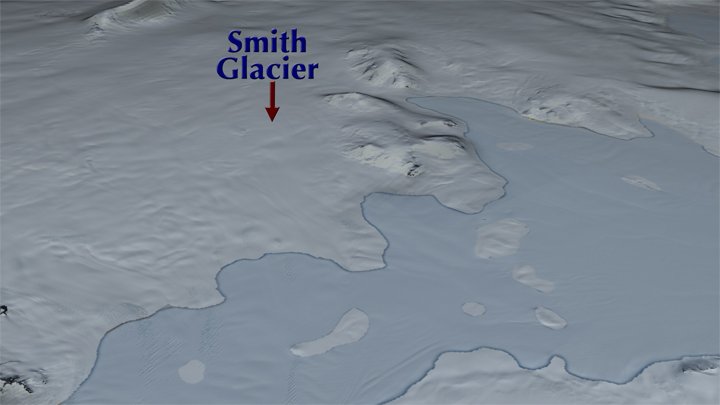
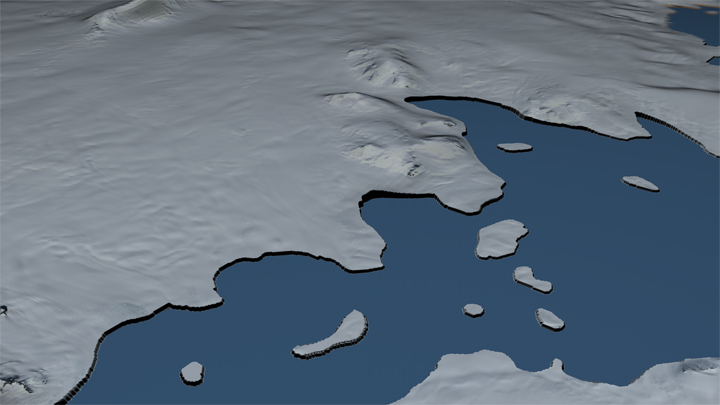
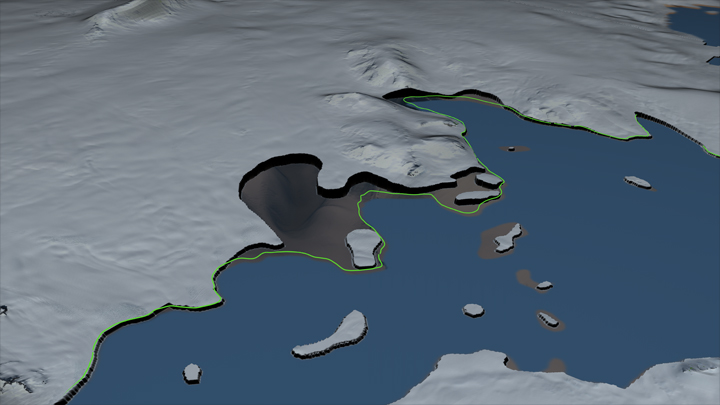
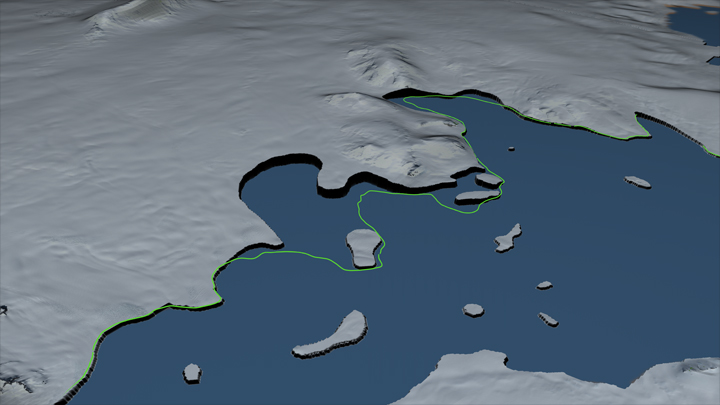
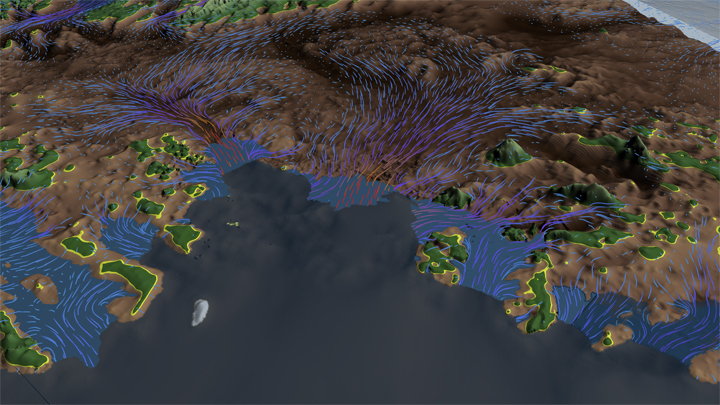

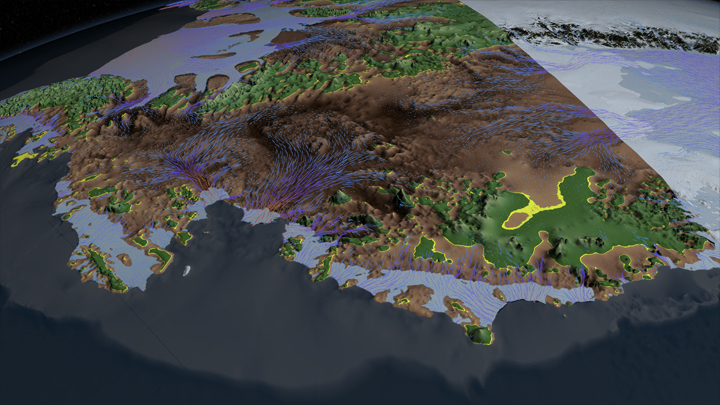
Related
For More Information
Visualization Credits
Horace Mitchell (NASA/GSFC): Animator
Greg Shirah (NASA/GSFC): Animator
Henry Kline (NASA/JPL CalTech): Video Editor
Eric J. Rignot (NASA/JPL CalTech): Narrator
Carol Rasmussen (NASA/JPL CalTech): Producer
Gay Y. Hill (NASA/JPL CalTech): Producer
Patrick Lynch (Wyle Information Systems): Producer
Eric J. Rignot (NASA/JPL CalTech): Scientist
Jeremie Mouginot (University of California, Irvine): Scientist
Bernd Scheuchl (University of California, Irvine): Scientist
Mathieu Morlighem (University of California, Irvine): Scientist
Helene Seroussi (NASA/JPL CalTech): Scientist
Laurence Schuler (ADNET Systems, Inc.): Project Support
Ian Jones (ADNET Systems, Inc.): Project Support
Joycelyn Thomson Jones (NASA/GSFC): Project Support
Leann Johnson (Global Science and Technology, Inc.): Project Support
Eric Sokolowsky (Global Science and Technology, Inc.): Project Support
Carol Rasmussen (NASA/JPL CalTech): Writer
NASA's Scientific Visualization Studio
http://onlinelibrary.wiley.com/doi/10.1002/2014GL060140/abstract
Short URL to share this page:
https://svs.gsfc.nasa.gov/4168
Missions:
Landsat
Operation IceBridge
Data Used:
Landsat-7/ETM+/Landsat Image Mosaic of Antarctica also referred to as: LIMA
Mosaic - NASA/GSFC, British Antarctic Survey, USGS EROS Data CenterAntarctic Bedmap2 Topography also referred to as: Bedmap2
Data Compilation - British Antarctic Survey - 2001-2012Antarctic Ice Sheet Velocity
Data Compilation - JPLGlacier Grounding Lines
Analysis - NASA/JPL - 1996, 2011Annual Ice Sheet Velocity for Amdunsen Sea Embayment
Data Compilation - NASA/JPL - 1996, 2008Keywords:
SVS >> Antarctic
SVS >> Antarctic Ice Sheet
SVS >> HDTV
SVS >> Ice Shelf
GCMD >> Earth Science >> Cryosphere >> Glaciers/Ice Sheets >> Ice Sheets
GCMD >> Earth Science >> Hydrosphere >> Glaciers/Ice Sheets >> Ice Sheets
SVS >> Hyperwall
DLESE >> Narrated
NASA Science >> Earth
GCMD >> Earth Science >> Terrestrial Hydrosphere >> Glaciers/Ice Sheets >> Ice Sheets
GCMD keywords can be found on the Internet with the following citation: Olsen, L.M., G. Major, K. Shein, J. Scialdone, S. Ritz, T. Stevens, M. Morahan, A. Aleman, R. Vogel, S. Leicester, H. Weir, M. Meaux, S. Grebas, C.Solomon, M. Holland, T. Northcutt, R. A. Restrepo, R. Bilodeau, 2013. NASA/Global Change Master Directory (GCMD) Earth Science Keywords. Version 8.0.0.0.0
